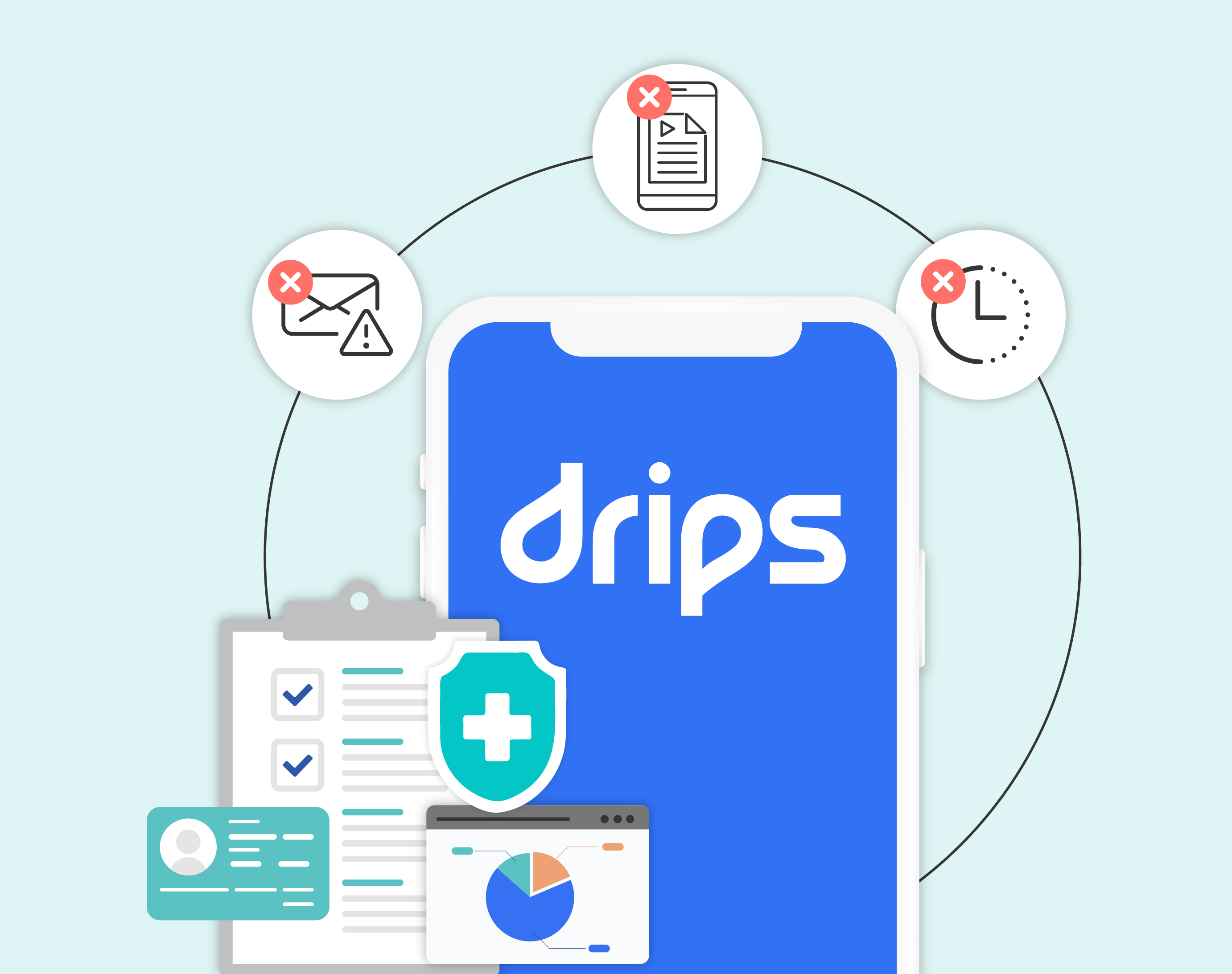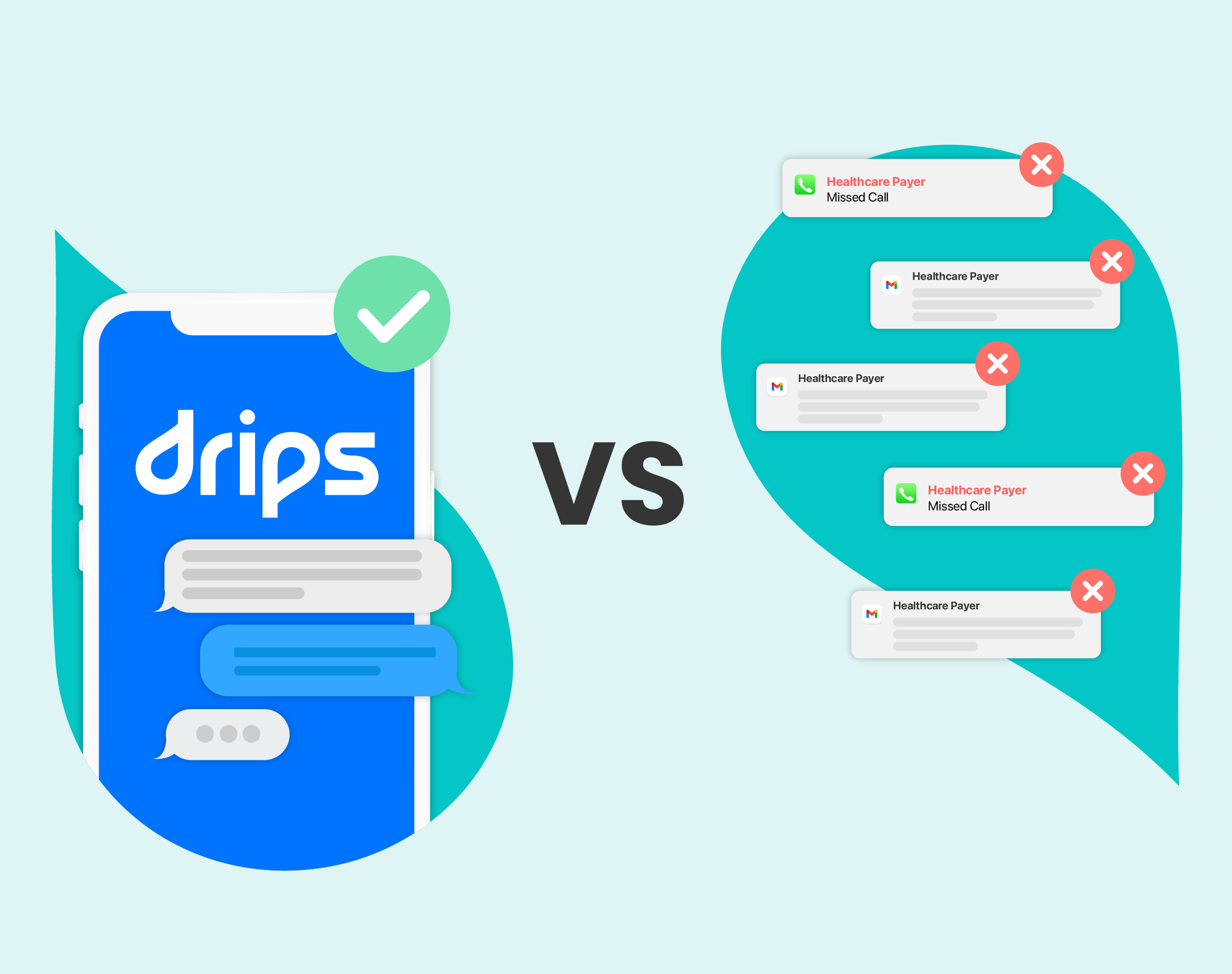Drips Drives an 8.8% Uplift in Medication Adherence and $3.41M in Net Income for a Major U.S. Payer's Non-Adherent Population
Program Objective
The primary goal of this program for this US payer, operating in over 30 states nationwide, was to increase medication adherence among their previously non-adherent members taking Part D medications (oral diabetes medications, hypertension medications, and cholesterol statins).
The Cost of Non-Adherence
This initiative aimed to improve medication adherence, a key factor in Medicare Advantage Star Ratings. CMS assigns triple weight to adherence measures for diabetes, hypertension, and
cholesterol medications, using the Proportion of Days Covered (PDC) methodology. To be considered adherent, a member must have their medication on hand at least 80% of the time, the
minimum threshold for effective treatment.
CMS sets annual cut points for adherence, determining the percentage of members who must meet this threshold. Falling below these benchmarks can impact a plan’s Star Rating and financial performance. Conservatively, each non-adherent member adds an estimated $1,250 in avoidable costs for the plan, and an additional $949 in direct member costs annually.1
Strengthening adherence supports both quality improvement and cost efficiency, benefiting members and health plans alike.
Challenges
Before partnering with Drips, the payer primarily relied on large pharmacies for member engagement around medication adherence. This approach was fragmented and ineffective, leading to suboptimal adherence and Star Ratings. The payer needed a more cohesive and member-centric solution to improve medication adherence.
Solution
Drips delivered a comprehensive outreach program that included:
- SMS Message Reminders: Initiating member outreach via 2-way conversational text messages.
- Warm Transfers: Seamlessly driving warm transfers when requested or if a member fails to pick up their medication after a certain number of days; connecting members to an internal call team or their preferred pharmacy for further support.
- Behavioral Adaptation: Meeting members where they are, using different times and modalities to engage them effectively.
Conversational Outreach Scripting Flow
- Verification: Confirming the member's identity with a friendly introduction (e.g., "Hi, this is Katie from ….")
- Personalized Reminders: Sending reminders about upcoming refills based on the member's medication schedule.
- Friendly Persistence & Insights: Maintaining a human-like persistence to encourage adherence, ensuring the messages are supportive and non-intrusive.
Program Results
- Non-Adherent Members Reached: 1.198 million unique2 members over a 9-month period in 2024 with 43.1% of members engaging with the Drips messages.
- Medication Refill Rate: 58.8% of members who were deemed consistently non-adherent ended up refilling their medications, having a significant impact on projected cut points for the 2026 Stars Year.
- Incremental Adherence: 8.8% uplift compared to the previous year $3.41M net income and savings impact in the first year.
Key Learnings
- Engaged Members: Members who responded were 2.3 times more likely to refill on time and 4.1 times more likely to refill on the same day.
- Pharmacist Interaction: Members who requested to speak with a pharmacist were 11.7% more likely to refill on the same day.
- Special Scripting: Enhanced engagement uplift achieved through tailored scripting for different member groups (upcoming refills, missed/past due).
Health Equity Insights
A Health Equity demographic analysis of the member population included in the Med Adherence program was performed mid-program to identify areas to optimize. Drips looked at Engagement, Transfer to Pharmacist, and Med Adherence Rate by Race, Gender, Language, State, and Age Group:



Client Success and Team Engagement
The Drips Client Success Team played a pivotal role in the success of this Program.
Here’s how:
- Regular Meetings: We held biweekly meetings with the client to review performance, optimize strategies, and identify market trends. These meetings ensured that we were always aligned with the client's goals and could make timely adjustments.
- End-to-End Support: Our team provided comprehensive support, from monitoring conversations and deliverability to adjusting strategies based on insights. This end-to-end support was crucial in maintaining high engagement rates and achieving the desired outcomes.
- Client Feedback: The client consistently provided positive feedback on the reliability and responsiveness of our team. They appreciated our proactive approach and the way we acted as a true extension of their team.
- Continuous Improvement: We conducted ongoing testing and made adjustments based on market trends and client insights. This iterative process helped us refine our approach and achieve better results over time.
- Dedicated Teams: Our Client Success team, production teams, and client insight managers worked together seamlessly to monitor results, ensure good deliverability, and provide relevant reporting and analytics.
Program Conclusion
The results of this program underscore the transformative impact of Drips' targeted Medication Adherence campaigns. By leveraging personalized outreach and continuous engagement, Drips successfully drove an 8.8% uplift in Medication Adherence among a previously non-adherent population. This improvement not only enhanced the payer's Star Ratings but also generated significant cost savings and quality improvements.
The dedication and proactive approach of the Drips Client Success Team were pivotal in achieving these outcomes. Through regular meetings, end-to-end support, and continuous improvement efforts, the team ensured high engagement rates and effective strategy adjustments. The positive feedback from the client highlights the reliability and responsiveness of the Drips team, reinforcing the value of strong client partnerships.
For quality leaders in the healthcare payer space, these outcomes demonstrate that partnering with Drips is a strategic move to enhance Medication Adherence, improve Star Ratings, and achieve cost efficiency. The comprehensive and member-centric approach Drips leads with makes it an obvious choice for payers looking to drive better health outcomes and financial performance.
Footnotes
1. PMC NCBI - Economic impact of medication non-adherence by disease groups: a systematic review
2. A member may have multiple refill events throughout the year but remains a single unique count in the population. This ensures accurate population sizing, preventing inflation due to multiple touchpoints. The model accounts for the likelihood of adverse events, preventing overstatement of medical cost savings or impact by avoiding redundant counting.





%20Outreach%20Success%20Story-Thumbnail.png)





